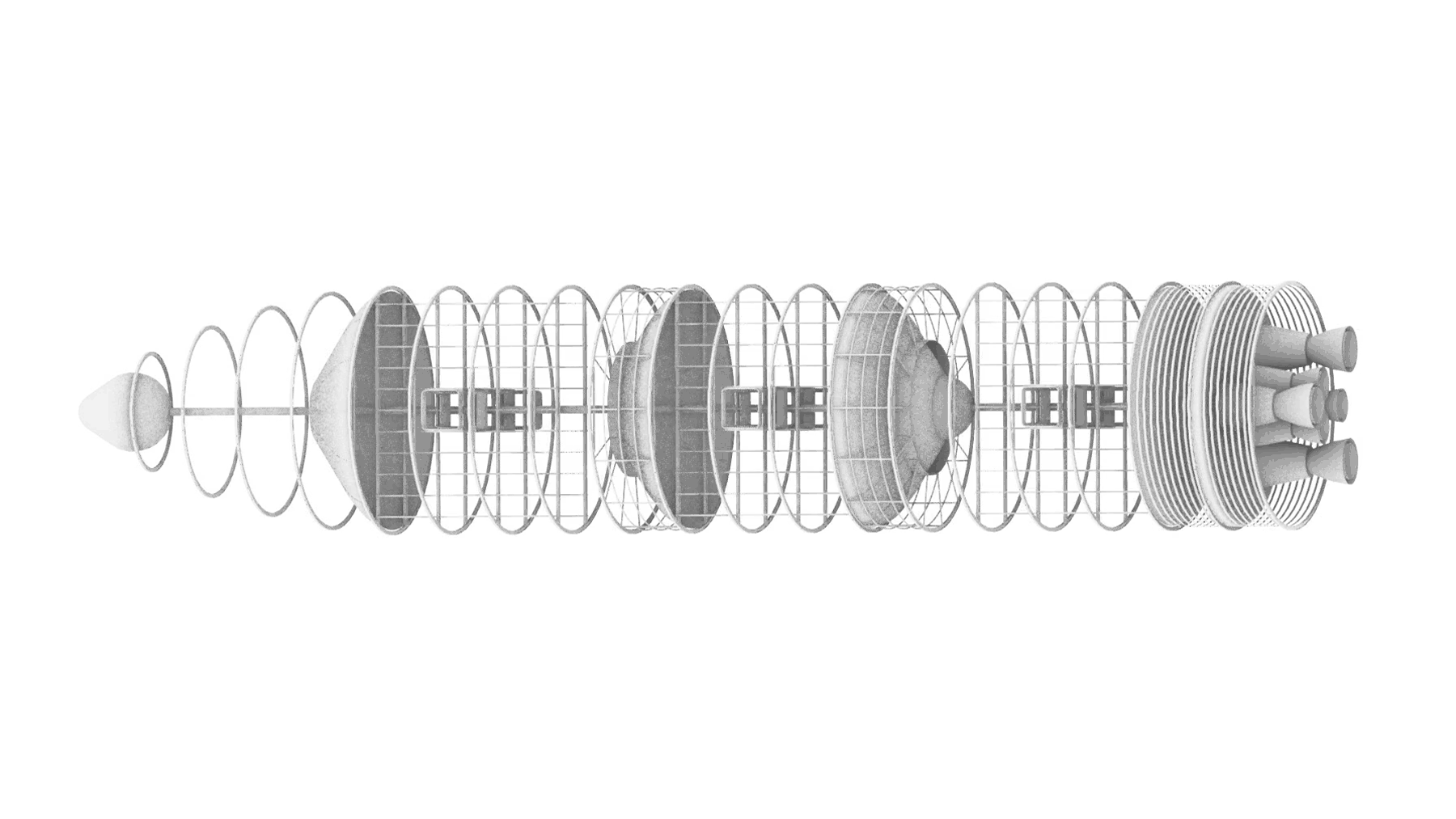Rocket Horizon
Transforming Starship HLS into Sustainable Lunar Habitat
How to design sustainable habitats on lunar surface?
MIT’s Rocket Horizon project is pioneering a revolutionary approach to creating lunar habitats, merging sustainability with cutting-edge space technology. This ambitious collaboration unites MIT’s Department of Architecture, Media Lab, Aero Astro, and Sloan School of Management to transform SpaceX’s Starship Human Landing System (HLS) into a reusable and sustainable living space on the Moon.
-
2024
-
Collaborative Research & Design
-
Mare Cognitum region, Moon
-
Architectural Designer: Wang Zhi-Ray, So Jung Lee
Aerospace Engineer: Jon Lupo, Heekun Roh
Business Analyst: Manuel Alejandro Sanchez Castro
-
Skylar Tibbits (MIT Architecture)
Nicholas de Monchaux (MIT Architecture)
Cody Paige (MIT Media Lab)
Jeffrey Hoffman (MIT Aero/Astro)
Ed Crawley (MIT Aero/Astro)
-
An Interdisciplinary Collaboration Beyond Earth
Rocket Horizon is an interdisciplinary collaboration across various MIT departments. This project combines architectural design with advanced technology and robust engineering solutions, drawing on the expertise of MIT’s Department of Architecture, Media Lab, Aero Astro, and Sloan School of Management. During their research, the team was inspired by several visits to NASA’s Johnson Space Center, Marshall Space Flight Center, and SpaceX’s Starbase.
Sustainable Approach to Designing Lunar Habitats
Central to Rocket Horizon's innovation is reusability, a key principle in the aerospace industry that drives down costs and makes space exploration economically viable. The team is taking this concept to the next level, not just reusing rockets for transportation but also repurposing them to build and construct lunar infrastructure. By adapting SpaceX's Starship HLS, the project aims to minimize the need for additional on-site construction, allowing for quicker habitat setup that supports human life on the Moon. This approach aligns with the emerging "New Space Economy," emphasizing sustainability and circularity to avoid repeating the mistakes made on Earth, in lower orbit, and during previous lunar explorations, where contamination has been a significant issue.
Autonomous Operation from Landing to Landscaping
Rocket Horizon involves using autonomous construction vehicles to prepare the lunar surface and cover the habitat with lunar regolith for radiation protection. The Starship, which lands vertically, will be repositioned horizontally to suit the habitat’s design. The area of the terrain where the starship will lie horizontally will be reshaped into dunes to mitigate the impact force of the descending starship as effectively as possible. To execute the toppling process, the reaction control thrusters located around the perimeter of the starship's payload section will be utilized. Through a combination of the modified landscape and reaction control thrusters, the starship will safely assume a horizontal position relative to the lunar surface.
New Horizon for Future Lunar Habitats
The Rocket Horizon project goes beyond just designing one single lunar habitat; it serves as a prototype for how we might establish a sustainable and scalable human presence on the Moon. By repurposing existing space infrastructure, the project offers insights into creating efficient and functional clusters that could be used in future space missions. As more economical and rapid production technologies emerge, the cost of space travel will significantly decrease. By connecting multiple rocket units, there is the potential to create larger-scale research institutions and foundational infrastructure for lunar exploration. Rocket Horizon provides a blueprint for exploring new frontiers, and a permanent life on the moon is no longer an unreachable goal.











